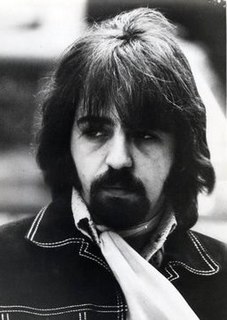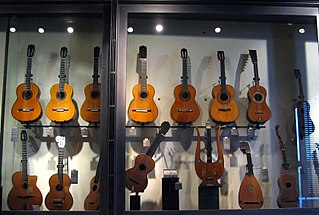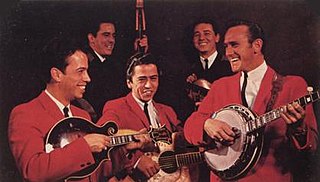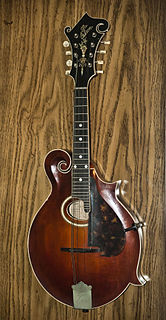The banjo is a stringed instrument with a thin membrane stretched over a frame or cavity to form a resonator. The membrane is typically circular, and usually made of plastic, or occasionally animal skin. Early forms of the instrument were fashioned by African-Americans in the United States. The banjo is frequently associated with folk and country music, and has also been used in some rock, pop and hip-hop. Several rock bands, such as the Eagles, Led Zeppelin, and The Allman Brothers, have used the five-string banjo in some of their songs. Historically, the banjo occupied a central place in Black American traditional music and the folk culture of rural whites before entering the mainstream via the minstrel shows of the 19th century. Along with the fiddle, the banjo is a mainstay of American styles of music, such as Bluegrass and old-time music. It is also very frequently used in traditional ("trad") jazz. Banjo is also a common instrument for Caribbean genres like Biguine, Calypso and Mento.
Bluegrass music is a genre of American roots music that developed in the 1940s in the United States Appalachian region. The genre derives its name from the band Bill Monroe and the Blue Grass Boys. Unlike mainstream country music, bluegrass is traditionally played on acoustic stringed instruments. Bluegrass has roots in traditional English, Scottish, and Irish ballads and dance tunes and in traditional African-American blues and jazz. Bluegrass was further developed by musicians who played with Monroe, including 5-string banjo player Earl Scruggs and guitarist Lester Flatt. Monroe characterized the genre as: "Scottish bagpipes and ole-time fiddlin'. It's a part of Methodist, Holiness and Baptist traditions. It's blues and jazz, and it has a high lonesome sound."

The cümbüş is a Turkish stringed instrument of relatively modern origin. It was developed in 1930 by Zeynel Abidin Cümbüş (1881–1947) as an oud-like instrument that could be heard as part of a larger ensemble.

Clarence White was an American bluegrass and country guitarist and singer. He is best known as a member of the bluegrass ensemble the Kentucky Colonels and the rock band the Byrds, as well as for being a pioneer of the musical genre of country rock during the late 1960s.

New Grass Revival was an American progressive bluegrass band founded in 1971, and composed of Sam Bush, Courtney Johnson, Ebo Walker, Curtis Burch, Butch Robins, John Cowan, Béla Fleck and Pat Flynn. They were active between 1971 and 1989, releasing more than twenty albums as well as six singles. Their highest-charting single is "Callin' Baton Rouge", which peaked at No. 37 on the U.S. country charts in 1989 and was a Top 5 country hit for Garth Brooks five years later.

The tenor guitar or four-string guitar is guitar variant, with four strings rather than the standard six, and with a slightly smaller body and higher-pitched sound. The instrument was initially developed in its acoustic form by Gibson and C.F. Martin during the 1920s so players of the four-string tenor banjo could double on guitar, and is also manufactured in electric forms.

Edwin Ellsworth Peabody, known as Eddie Peabody was an American banjo player, instrument developer and musical entertainer whose career spanned five decades. He was the most famous plectrum banjoist of his era.

Flatpicking is the technique of striking the strings of a guitar with a pick held between the thumb and one or two fingers. It can be contrasted to fingerstyle guitar, which is playing with individual fingers, with or without wearing fingerpicks. While the use of a plectrum is common in many musical traditions, the exact term "flatpicking" is most commonly associated with Appalachian music of the American southeastern highlands, especially bluegrass music, where string bands often feature musicians playing a variety of styles, both fingerpicking and flatpicking. Musicians who use a flat pick in other genres such as rock and jazz are not commonly described as flatpickers or even plectrum guitarists. As the use of a pick in those traditions is commonplace, generally only guitarists who play without a pick are noted by the term "fingerpicking" or "fingerstyle".

James Tyler was a 20th-century American lutenist, banjoist, guitarist, composer, musicologist and author, who helped pioneer an early music revival with more than 60 recordings.

A mandolin orchestra is an orchestra consisting primarily of instruments from the mandolin family of instruments, such as the mandolin, mandola, mandocello and mandobass or mandolone. Some mandolin orchestras use guitars and double-basses instead of, or as well as, the lower mandolin-family instruments.

The following is a bibliography of classical guitar related publications.

Giuseppe Pettine was an Italian-American concert mandolinist, teacher, and composer.

The Kentucky Colonels were a bluegrass band that was popular during the American folk music revival of the early 1960s. Formed in Burbank, California in 1954, the group released two albums, The New Sound of Bluegrass America (1963) and Appalachian Swing! (1964). The band featured the influential bluegrass guitarist Clarence White, who was largely responsible for making the acoustic guitar a lead instrument within bluegrass, and who later went on to join the Los Angeles rock band the Byrds. The Kentucky Colonels disbanded in late 1965, with two short-lived reunions taking place in 1966 and 1973.
Theron Evan Hale was an American old-time fiddle and banjo player. He was a member of the Grand Ole Opry in the late 1920s and 1930s, and is often remembered as a more laid back and sedate alternative to the raucous dance and "hoedown" music that dominated the Opry in its early days. Hale continued playing and recording until the late 1940s, often accompanied by Opry guitarist Sam McGee.

Clifford Essex was an English banjoist, teacher, and instrument manufacturer during the Victorian and Edwardian eras.

Philip James Bone was an English mandolinist and guitar player in the late 19th and early 20th centuries.

Clarence Lockhart Partee was an American composer and arranger and music publisher. He was also founder, editor and publisher of The Cadenza magazine, and devoted his life to teaching and advancing the banjo, mandolin and guitar, arranging more than 150 works for these three instruments. He was a charter member of the American Guild of Banjoists, Mandolinists & Guitarists, now two separate organizations, the American Guild of Music and the Fretted Instrument Guild of America .

William Foden was an American composer, musician, and teacher. Foden is considered America's premiere classical guitarist during the 1890s and the first decades of the twentieth century.

The mandolin has had a place in North American culture since the 1880s, when a "mandolin craze" began. The continent was a land of immigrants, including Italian immigrants, some of whom brought their mandolins with them. In spite of the mandolin having arrived in America, it was not in the cultural consciousness until after 1880 when the Spanish Students arrived on their international performing tour. Afterwards, a "mandolin craze" swept the United States, with large numbers of young people taking up the instrument and teachers such as Samuel Siegel touring the United States. The fad died out after World War I, but enough had learned the instrument that it remained. The mandolin found a new surge with the music of Bill Monroe; the Gibson F-5 mandolin he played, as well as other archtop instruments, became the American standard for mandolins. Bowlback mandolins were displaced. The instrument has been taken up in blues, bluegrass, jug-band music, country, rock, punk and other genres of music. While not as popular as the guitar, it is widespread across the country.
Joseph Erskine Agnew was a musician, arranger, music store proprietor, and music publisher in Des Moines, Iowa and later Newton, Iowa briefly. He played the mandolin. He became a nationally prominent band music publisher. Sheet music published by his Agnew Music Publishing Company is in the collections of the Library of Congress, the University of Missouri-Kansas City, and the University of Rochester.


















